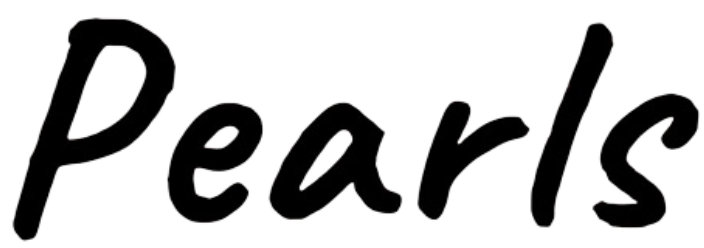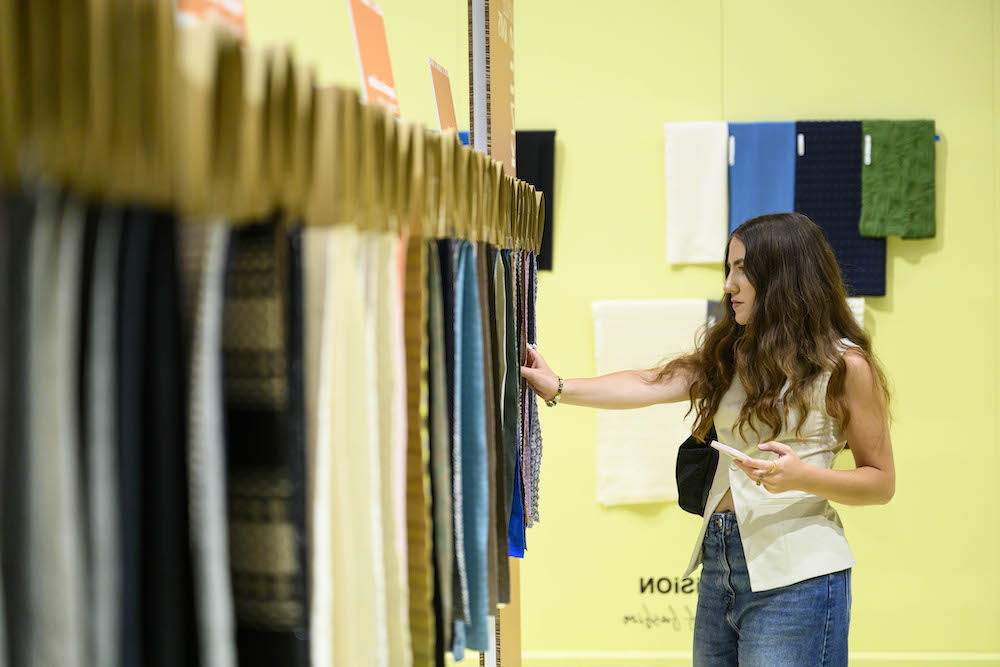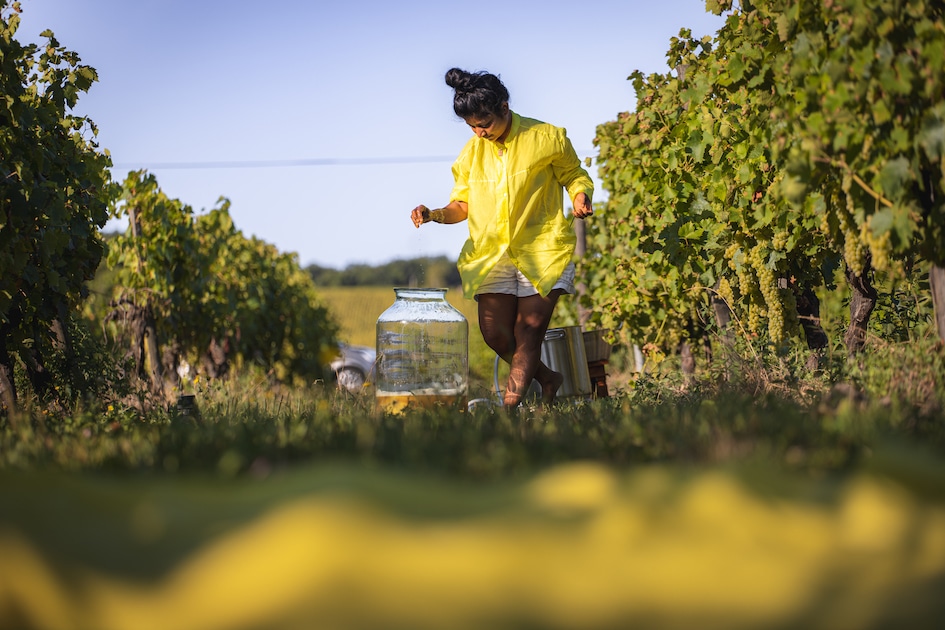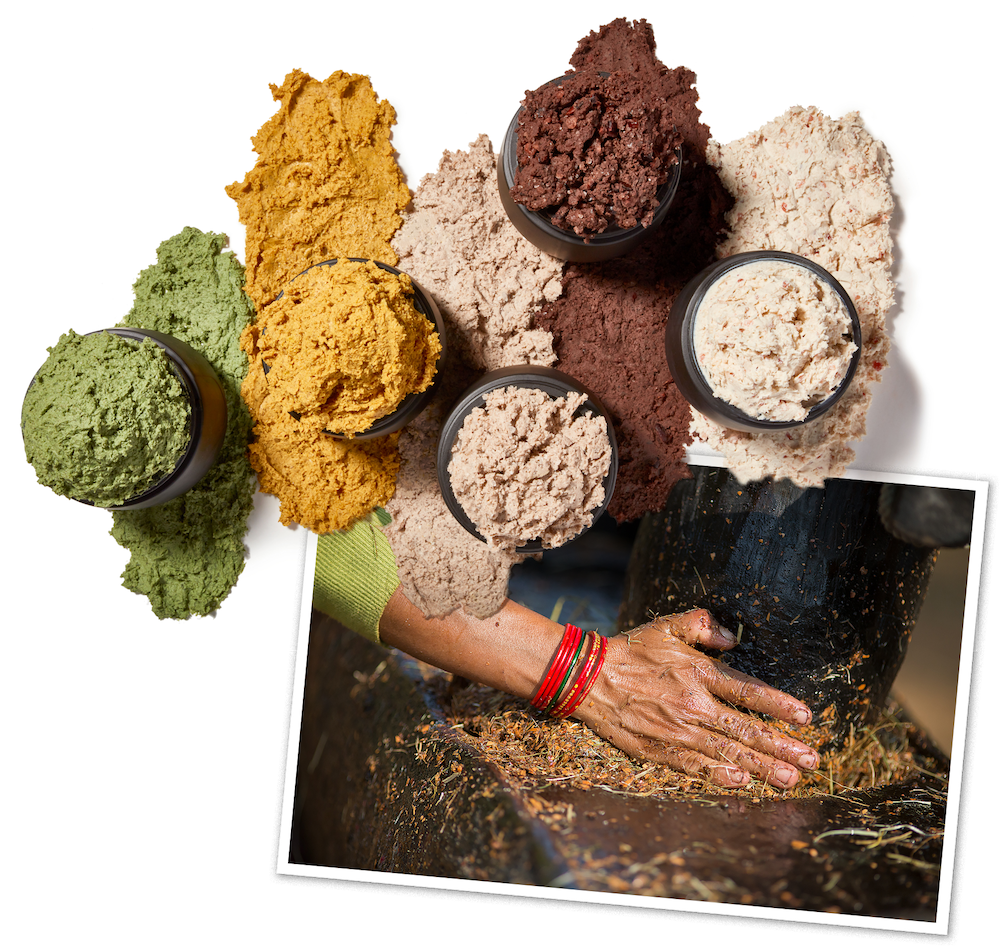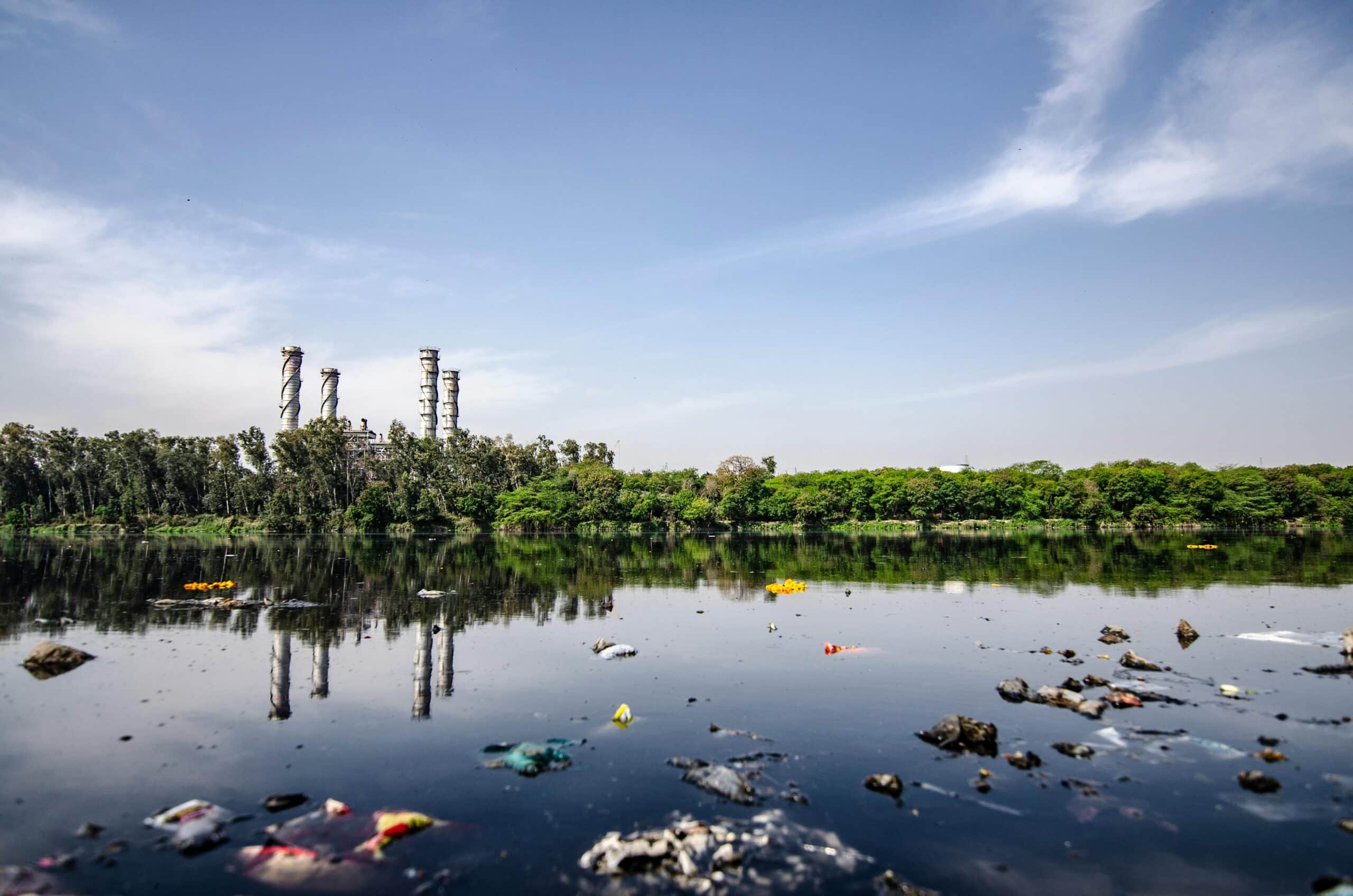Partner content
After New York, Paris will host the new edition of Première Vision from February 11 to 13, 2025. The Paris-Nord Villepinte Exhibition Center will become the highest place of global creation for brands and designers, unveiling the Spring-Summer 2026 collections.
In a context where the fashion industry is facing unprecedented challenges, Florence Rousson, Chairwoman of the Management Board of Première Vision Paris, shares her vision on the ongoing transformations. As the environmental crisis becomes a central concern, companies are realizing the importance of adopting more sustainable and responsible practices. In this interview, she outlines the current challenges, innovative initiatives, and emerging trends marking the transition to a more environmentally friendly fashion.

Florence Rousson
Hello Florence! Could you provide an overview of the current state of fashion?
Fashion is currently experiencing a genuine crisis of value and values. Shaken by a succession of upheavals—economic, ecological, energy-related, and of meaning—it is at a historic turning point.
Thus, Première Vision is facing key challenges related to the profound transformations within the fashion industry. In a context marked by these upheavals, the trade show must respond to the expectations of an industry in search of meaning. In this context, craftsmanship emerges as an essential reference for current challenges. Preserved, rethought, and carried by passionate individuals—artisans, artists, industrialists, and a new resilient generation—these skills propose a possible reset of the system.
This involves valuing craftsmanship while integrating innovation and sustainability. It is also about providing an enriching experience for international visitors, with optimized organization and technological tools (such as a mobile app and AI assistant) to meet customization needs.
In your opinion, where do fashion companies stand in their transition towards more responsible fashion?
The transition of fashion companies towards a more responsible approach varies depending on numerous factors, including the size of the companies, their sector of activity, their country of origin, and the regulatory frameworks in place. This process can therefore be faster or slower depending on these parameters.
However, a general observation emerges: fashion companies are increasingly aware of the environmental urgency and are actively engaging in this transition. Moreover, they are facing dual pressure. On one hand, brands are adopting sustainable sourcing practices, pushing their partners to comply with these new requirements.
On the other hand, consumers are paying increasing attention to the environmental impact of their purchases, thus influencing the priorities of industry players.
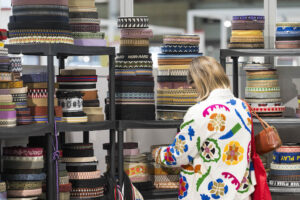
Awareness of this issue in a general sense
In response to these challenges, our program A Better Way highlights the efforts made by companies to adopt more sustainable fashion. The success of this program is reflected in the continuous increase in the number of exhibitors labeled A Better Way, a strong testament to the collective commitment to a more environmentally friendly fashion.
This movement reflects a significant evolution, marking an essential step towards a more responsible fashion industry aligned with current societal expectations.
For more information on this topic, I also invite you to take a look at the study we conducted in partnership with IFM regarding “THE NEW PRIORITIES OF YOUNG CONSUMERS”: click here.
What new features can we expect to discover at Première Vision Paris?
As announced a few months ago, Première Vision Paris maintains its rhythm with two annual events, differentiated and complementary. Craftsmanship will be at the heart of the February 2025 edition, and all upcoming February editions, to unveil the Spring-Summer collections.
PV Paris September: September 16 – 18, 2025
The event invites the discovery of unique, contemporary, or ancestral craftsmanship, and explores the latest developments in textiles, leather, accessories, and design. Spinners, weavers, tanners, designers, accessory manufacturers, garment makers… from about forty countries—Italy, France, Spain, Portugal, Japan, the UK, Belgium, South Korea, Turkey, China…—will gather for three days focused on this theme.
An exhibitor offering spread over two halls and organized around 8 distinct universes serving the markets of creative and responsible fashion: Accessories – Designs – Fabrics – Leather – Maison d’Exceptions – Manufacturing – Smart Creation – Yarns.
The new configuration of the event across two halls—implemented in July 2024—allows for a concentration of visitor flow, strengthening commercial synergies and providing a smoother visiting experience with shorter pathways.
Two fashion forums:
• Inspiration Forum (Hall 5): an immersive space to explore the major trends of the Spring-Summer 26 season, with a particular focus on the most promising craftsmanship of the season: airy structures, constructions energized by new 3D technologies, lightweight and floating materials for summer protections…
• Sourcing Solution Forum (Hall 6): a space designed to facilitate the choice of suppliers and products suitable for developing collections. This forum is divided by specialties: prints, embroidery, lace, silks and jacquards, shirting, jeans wear, casual wear, city wear, knits, sport & outdoor, lingerie. Visitors will also discover dedicated areas for yarns, manufacturing, as well as a significant eco-innovation space dedicated to low environmental impact materials.
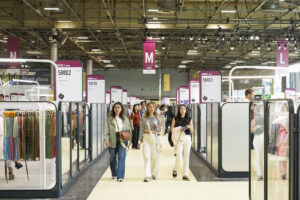
Will French leather and craftsmanship excellence also be highlighted as in previous editions?
Craftsmanship will be highlighted in this edition, as well as in all upcoming February editions, regardless of origin. Leather will, of course, also be featured in this edition, with the “Les Tanneurs Français” space making a return.
In this edition, a selection of leather from French tanners dyed in the colors of the Première Vision range will even be exhibited. On the leather side, Audrey Bigouin, Hors Studio, and Studio Loann revisit leather working by blending traditional craftsmanship, contemporary creativity, and an eco-responsible approach.
Using scraps and waste, these artisans transform constraints into engines of innovation, exploring the multiple facets of leather: vibrant textures, ingenious entanglements, and subtle color palettes.
Their circular and sustainable approach, bridging fashion and design, elevates the imperfect and highlights the potential of leather in a practice that combines aesthetics with respect for the material. These creations, exhibited at the heart of the Inspiration Forum, both sculptural and functional, embody an inspired dialogue between art craftsmanship and modernity.
Other creations from other specialties also be exhibited (Fabrics, Accessories…)!
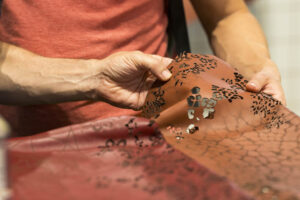
What are the eco-responsible trends for Spring-Summer 2026?
Cotton
Cotton remains a staple in collections, with a marked decrease in natural-synthetic blends, which had been on the rise in recent years. The trend is shifting back to 100% cotton, accompanied by a notable reduction in polyester usage. Consumers and brands now favor certified organic cotton (Fairtrade, Regenagri, GEC) or cotton from traceability programs, as well as regenerative cotton.This renewed emphasis on cotton extends to sectors beyond casual wear, where it is traditionally dominant. It can be found in hybrid products that integrate technical textiles, such as waterproof fabrics or those with innovative finishes.
Wool
Wool is experiencing a phase of rediscovery, particularly for its natural temperature-regulating properties. Companies are moving towards fine yarns suitable for lightweight summer fabrics. Collections showcase premium yarns made from long fibers, often certified RWS (Responsible Wool Standard) or mulesing-free, thus reinforcing their commitment to ethics and quality.
Recycled Synthetics
A major focus is the development of recycled synthetic fibers, such as polyester and polyamide, made from post-consumer textile waste.
With a resolutely circular approach, these materials are increasingly designed as mono-materials, simplifying their future recycling. These trends illustrate the growing willingness of textile players to implement more sustainable and responsible practices, in line with consumer expectations.
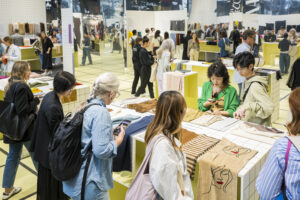
Can you name at least 3 innovative and committed companies that are essential to see at the fair?
Showa – Japan
• Expertise: Premium relax and denim.
• To discover: Ultra-sophisticated fabrics that combine tradition and innovation, such as 100% cotton yarns with mechanical stretch or waterproof fabrics.
Positive Materials – Portugal
• Expertise: Recycled synthetic fibers and traceable wools.
• To discover: The EQwools certification for ethical and fully traceable Australian merino wool.
Weturn – France
• Expertise: Recycled fabrics.
• To discover: An innovative system for valorizing textile waste to produce recycled cotton fabrics, serving a circular economy.
Acatel – Portugal
• Expertise: Recycled fibers and sustainable pigments.
• To discover: Pigments for printing and dyeing derived from biological processes (Colorifix) or made from plant-based and mineral ingredients.
What are the CSR commitments for organizing this new edition?
Sustainability and innovation permeate every aspect of the fair, from the exhibitors’ stands to the very organization itself. We are actively committed to guiding the industry towards more responsible and innovative fashion, providing concrete solutions such as the A Better Way program.
At the same time, we are working to make our events increasingly eco-responsible. A notable example is our partnership with Muto, a company specializing in waste valorization, particularly from the structures of our fashion forums. In 2024, Muto recovered nearly 13 tons of materials, equivalent to a saving of 22 tons of CO2, which it redistributed to associations, cultural projects, and educational institutions.
Text : Florence Rousson / Anne-Sophie Castro
Photos : Première Vision Paris – July 2024
Visit Première Vision’s website
More information on sustainable and ethical fashion in our magazine
